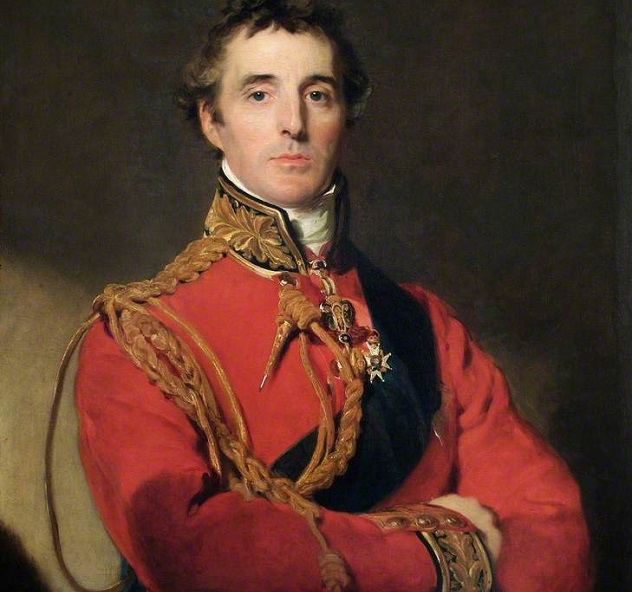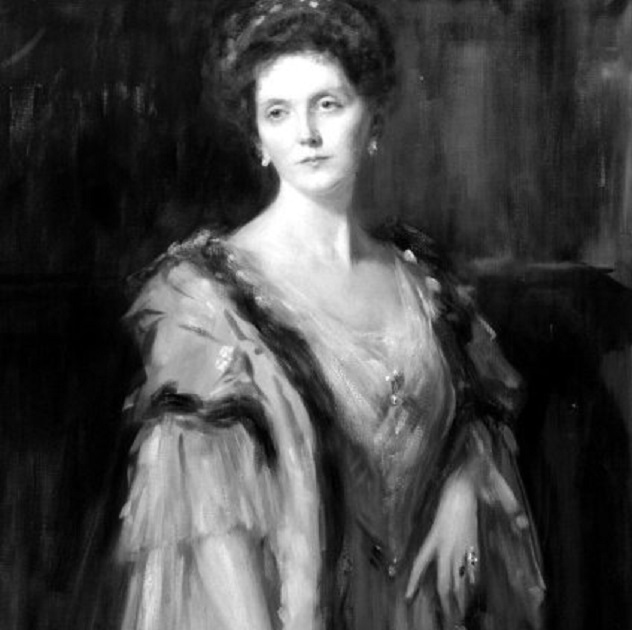10 Eugene Robinson
In the lead-up to the 2006 Atlantic City mayoral election primary, city councilman and part-time Baptist minister Eugene Robinson decided to back a different candidate than the one supported by Craig Callaway, the president of the city council. The split in their political union happened because Callaway had admitted to taking bribes. Callaway took Robinson’s show of support as a sign of disloyalty. As punishment, he decided to destroy Robinson’s life. With the help of two of his brothers, Ronald and David, and a former municipal worker, Floyd Tally, they hired a 24-year-old prostitute and drug addict who lured Robinson to a motel room equipped with a hidden camera. They recorded Robinson giving the woman money for oral sex, which they also got on tape. After getting caught in the act, Robinson was shown the video and told that the DVD would be leaked to the media if he didn’t resign. Robinson refused to resign, and the blackmailers were true to their word. One of them wore an obvious disguise and delivered a copy of the DVD to a radio station. Meanwhile, Robinson contacted the police and said he was being blackmailed. He explained that the money he gave the woman was for soda, and he thought she was a tourist. The blackmailers were all arrested and convicted. Mastermind Craig Callaway was given three years, which he served concurrently with his sentence for bribery. Tally got 12 years, Ronald Callaway was given nine years, and David Callaway got four years. As for Robinson, he didn’t seek reelection at the end of his term. His health took a turn for the worse, and he said he was forced to move into a nursing home.
9Nelson Bunker Hunt
Early in 1981, Texas oil tycoon Nelson Bunker Hunt was contacted by a blackmailer who demanded a $440,000 “loan.” In exchange, the blackmailer wouldn’t tell anyone about an $87,000 bribe Hunt had arranged for Idaho Republican Representative George V. Hansen. However, an outraged Hansen immediately went to the Justice Department, protesting his innocence. That spooked the blackmailer, Arthur Greenhill Emens III, who quickly sent a second letter telling Hunt to forget about the whole extortion thing. Unimpressed by that gambit, the FBI tracked him down anyway. It turned out that Emens was employed at an Oklahoma City commodities trading firm, where Representative Hansen’s wife had made $87,000 speculating in silver in 1979. Emens believed that Hunt had set the silver deal up as a way of channeling bribe money to the Hansens, although this was never proven. After Hunt famously caused turmoil in the commodities market with a disastrous attempt to corner the global silver supply, an outraged Emens launched his blackmail plan. Emens was given three years’ probation, but the police weren’t done investigating. They began to look at the relationship between the oil tycoon Hunt and Rep. Hansen. That’s when they found out that Hansen had made false statements on financial disclosure forms. This included the $87,000 that Emens wrote about in his letter. In 1984, Hansen was reprimanded by the House of Representatives, sentenced to 5–15 months in prison, and fined $40,000. Despite the reprimand and facing jail time, Hansen ran for reelection in 1984. With 220,000 votes cast, he lost by only 167. He still went to federal prison and served a year in total. After being released, the charges were vacated by the Supreme Court, and his money was returned to him. But the hits just kept coming. Hansen was then convicted in an entirely different case on 45 counts of bank fraud for which he spent another 40 months in prison. Hansen passed away in August 2014.
8 Cindy Crawford And Rande Gerber
In July 2009, former supermodel Cindy Crawford and her husband, Rande Gerber, started getting phone calls demanding money for a compromising picture of the couple’s seven-year-old daughter. The picture, which was taken by the child’s nanny, featured the girl wearing shorts and a T-shirt while bound to a chair and gagged. The nanny had apparently taken the picture as part of a “joke” that she planned on playing on the couple. She had planned on pinning it on the door with a note that read, “The baby sitter went crazy and tied everyone up and they need your help! Please.” The man said that he was a good person and he didn’t want the picture to end up in the tabloids. So Gerber met the man, later identified as Edis Kayalar, and gave him $1,000 for the picture. A short time later, Kayalar called again, this time demanding $500,000, saying he had another copy of the picture. After this call, though, Kayalar was deported back to Germany for an immigration violation. That didn’t stop him from trying to extort more money from the couple. On November 1, he called again, this time demanding $100,000. Crawford and Gerber had had enough and got the FBI involved. Kayalar was arrested and convicted in Germany. He was given two years in prison over the extortion attempts.
7 Ian Strachan And Sean McGuigan
Thirty-one-year-old Ian Strachan and 41-year-old Sean McGuigan, both from London, believed they had hit the jackpot in 2006 when they met an aide to the royal family. Over five months, Strachan and McGuigan recorded eight hours of video of the aide getting drunk and doing cocaine. In the video, the aide (who was only identified as “Witness D”) claimed that a member of the royal family stuck his genitals in his face. Strachan and McGuigan also edited two lines of the recording together to claim that another male member of the royal family (identified as “Witness A”) performed a sex act on Witness D on the kitchen floor. Strachan and McGuigan tried to take their poor editing skills to the bank and approached various tabloids with the recording. Shockingly, considering the state of the British tabloids, there was no interest at all. With no tabloid buyers, the pair decided to go at it directly. Using Strachan’s mother’s phone, they called the assistant and demanded £50,000 to prevent the release of the video. The police were brought in at this point. When Strachan and McGuigan thought they were getting a meeting with either Witness A or one of his assistants, the police went instead. The two bumbling blackmailers brought the videos to meet the undercover police officer. Unsurprisingly, they were arrested and sentenced to five years in prison.
6 John Stamos
The part of the story that both blackmailer and victim agree is that 17-year-old Alison Coss met actor John Stamos in Orlando in 2004. At the time, Stamos had recently separated from his wife, Rebecca Romijn. This is where the stories start to diverge. Stamos said that Coss mentioned that she was on spring break from college. He hung out with Coss and her friend in his hotel room and socialized, but that was it. Coss’s version of the story is that she met Stamos at a party in a hotel room with strippers and that Stamos did cocaine. She claimed that when she sat nude in a hot tub with Stamos, he came on to her and she spent the night. After the party, Coss and Stamos kept in touch by email. But when Coss saw Stamos with his new girlfriend, Coss’s emails became much more sinister. In November 2009, Coss emailed Stamos saying a man named “Brian” had emailed her about compromising pictures from that night. Coss said she even paid $10,000 to get one back. Then Stamos started to receive emails from someone named “Brian L.” Brian said he had nude pictures of Stamos doing cocaine with strippers. Brian told Stamos that tabloids had offered up to $780,000 but that he would sell the pictures to Stamos for the bargain price of just $680,000. Stamos always maintained that the night in question never happened, so no pictures existed, which made it a no-brainer when it came to contacting the authorities. The FBI told Stamos to play along with the demands, so Stamos arranged the drop at an airport in Michigan in December 2009. Coss and her accomplice, 31-year-old Scott Sippola, were arrested after Sippola made the pick-up. The FBI searched the suspects’ homes, computers, and storage devices and could find no evidence of the pictures. Coss and Sippola were found guilty of breaking a number of federal laws and were each given 48 months in prison.
5 Joe Francis
On January 22, 2004, a masked man broke into the home of Joe Francis, who rose to fame and fortune for his “Girls Gone Wild” videos. The intruder tied Francis up and helped himself to a few items around the house. Then the masked man made Francis undress and placed a dildo near his naked backside. Holding him at gunpoint, he made Francis tell the camera that he was gay. Then the man stuffed Francis in the trunk of his own car and drove it a short distance away. A little later, Francis was able to free himself. He ran to his neighborhood security team, and the police were called. The next day, Francis was contacted by the home invader. He told Francis (then and in subsequent phone calls) to pay him $500,000 or else he would release the tape. Francis had a hard time deciding how to deal with the caller and often changed his mind. Sometimes, he said that he planned to pay the extortion; other times, he told the man to just release the video. After all, what did someone like Francis care about a dirty movie that he was forced to make at gunpoint? Amazingly, 10 months after the home invasion, the case was cracked wide open by none other than Paris Hilton. Hilton, who used to date Francis, pulled him aside at a party and said she knew who broke into his house and was blackmailing him. She said that a man at a late-night party in Las Vegas told her about the video involving Francis. The man said that one Darnell Riley had filmed it. Riley had been incarcerated from the age of 15 until he was 24 for killing two Korean shopkeepers in Los Angeles. Four years after being released from prison, he had worked his way into the same social circle as Hilton and Francis. Francis made Hilton talk to the police, and Riley was arrested and convicted for the home invasion and blackmail. He was given a sentence of 10 years and eight months in February 2006.
4 Mohamed Arshad
Sometime in 2004, 38-year-old cab driver Mohamed Arshad picked up a woman who had flagged him down in Newport, Wales. Once in the cab, 37-year-old Mussarat Nazir recognized Arshad as a childhood friend. As children, they had a rather awkward moment together. Twenty-five years prior, when Arshad was 13 and Nazir was 12, they used to walk together to school. Then one morning in 1980, Arshad made his way into Nazir’s bedroom and exposed himself. One could write this off as an embarrassing youthful indiscretion, but Nazir, who was a heroin addict, decided to use this as a source of blackmail. She told Arshad to give her money so she wouldn’t tell his family about the childhood incident. Arshad, who did not want to disgrace his family, agreed to pay. Over time, he forked over a total of £20,000 (US$30,000). Each time, Nazir said it would be the last time she would ask him for money, but she always came back for more. In late 2004, when Nazir asked for an additional £4,000 (US$6,000), Arshad had had enough. Instead of just publicly admitting to the incident and taking away Nazir’s blackmail ammunition, he cooked up a plan. Arshad lured Nazir to a remote location and strangled her to death with a tow rope. After she was dead, he poured gasoline in her car and set it ablaze. The fiery car was found a short time later, and police had no problem tracking down Arshad, who still smelled like gasoline when they interviewed him. The odd case surrounding the chance encounter led to Arshad being sentenced to life in prison.
3 Yuan Baojing
Yuan Baojing was the president of the Beijing-based Jianhao Group, which was a multimillion-dollar trading house in the 1990s. At some point, the company lost ¥3 billion (US$11 million), for which Baojing blamed his business partner, Liu Han. Looking to get revenge, Baojing enlisted the help of former police officer Wang Xing to kill Han. Xing hired a professional hit man for the job, but when the hit went down, the gunman missed both of his shots and was arrested. Xing then saw his opportunity to blackmail Baojing. He demanded money from the tycoon in exchange for his silence about the assassination attempt. In perhaps the most predictable criminal move ever, Baojing and his brother decided to hire an assassin to kill Xing. They were better at hiring than Xing had been: Baojing’s assassin (his cousin) didn’t miss. Xing was shot to death in October 2003. In December 2005, Baojing, his brother, and his cousin were found guilty of the murder and sentenced to death. On March 16, 2005, Baojing appeared in court for his final appeal. When he was told the ruling would be upheld, he looked agitated and apparently said, “I refuse to accept it. I will inform against someone.” He was led out of the court and executed 15 minutes later via lethal injection. His wife wasn’t allowed to attend and was shipped the ashes after his cremation.
2 The Duke Of Wellington
Arthur Wellesley, the original Duke of Wellington, is probably most famous for defeating Napoleon Bonaparte at the Battle of Waterloo in June 1815. But everyone moves on from their fame eventually. Later in his life, Wellington was so tired of his marriage that he didn’t even try to hide his affairs from his wife. One such affair in 1924 was with a courtesan named Harriette Wilson. Wilson had written a tell-all book about her affair with Wellington and had taken it to Joseph Stockdale, a notorious publisher of scandal and pornography. Stockdale wrote to Wellington and tried to blackmail him. He said he would give over the diary if Wellington paid him a lump sum. Wellington wrote back, saying unequivocally, “Publish and be damned!” The situation caught the attention of the media, and the story became very popular with cartoonists and satirists. Instead of shaming him for having an affair with a prostitute, Stockdale only helped solidify Wellington’s reputation as the Iron Duke.
1 Emily Post
Today, Emily Post is famous for literally writing the book on American etiquette and good manners in the aptly titled book Etiquette. Post became beloved for simplifying the etiquette process. For example, she suggested that if someone picks up the wrong fork for the wrong course, perhaps the host shouldn’t have put so many forks on the table. But before she became famous for Etiquette, Emily was the wife of a wealthy banker, Edwin, and mother of two. When her sons were old enough to go to boarding school, she started writing and found work with Scribner’s and Harper’s before publishing her first novel in 1904. During this time, Edwin was having a number of affairs, often with young, struggling actresses. In 1905, a scorned lover decided to contact a popular magazine in New York about her affair with Edwin. Edwin was soon called to the editor’s office. The editor said they were writing a tabloid book and that it would cost Edwin $500 to stay out of it. Edwin refused to bend to the extortion demand, quite possibly because he didn’t have that much money due to a string of bad investments. Instead, he went to the police. The police set up a sting in the washroom of a restaurant and caught the blackmailer red-handed. The New York Times caught a whiff of the story and portrayed Edwin as a hero. The day after the arrest, he received a standing ovation on the floor of the New York Stock Exchange. While the blackmail only improved Edwin’s image, Emily, who was a very proud woman, was humiliated by the scandal. The marriage had been in trouble for years, but this was the final straw for her. They divorced six months after the scandal began. Finding herself single and her children away at boarding school, Post more or less wrote full-time. In 1920, she started to write Etiquette. When it was published in 1922, it was a best seller for 18 months and continued to sell well when different editions came out decades later. Even today, editions are put out by Emily’s descendants. So while Emily Post had suffered unbelievable and very public humiliation because of blackmail, she very successfully vindicated herself. Her name is still synonymous with American etiquette and manners, and she was incredibly influential in American culture for generations. She passed away in 1960 at the age of 86. Robert Grimminck is a Canadian freelance writer. You can friend him on Facebook, follow him on Twitter or on Pinterest, or visit his website.
























